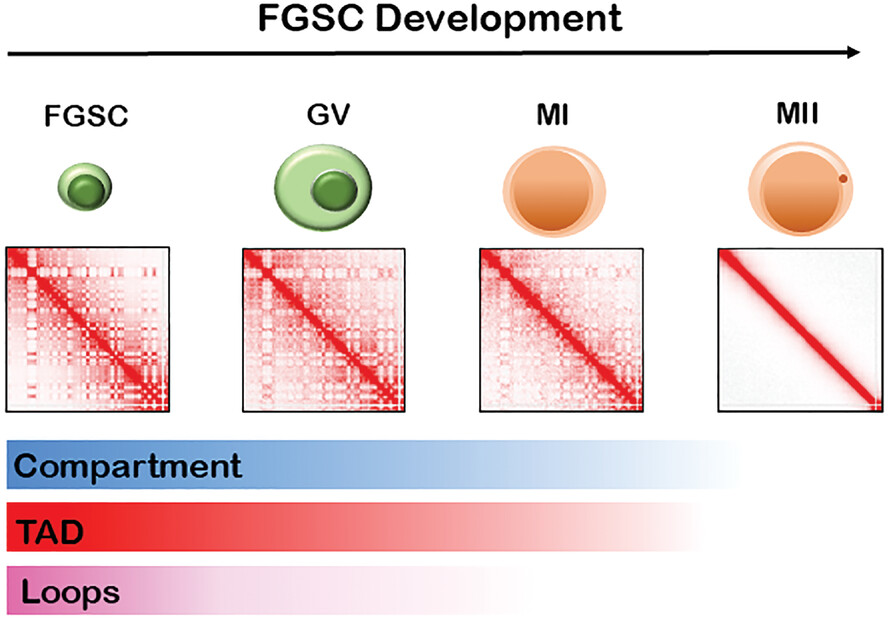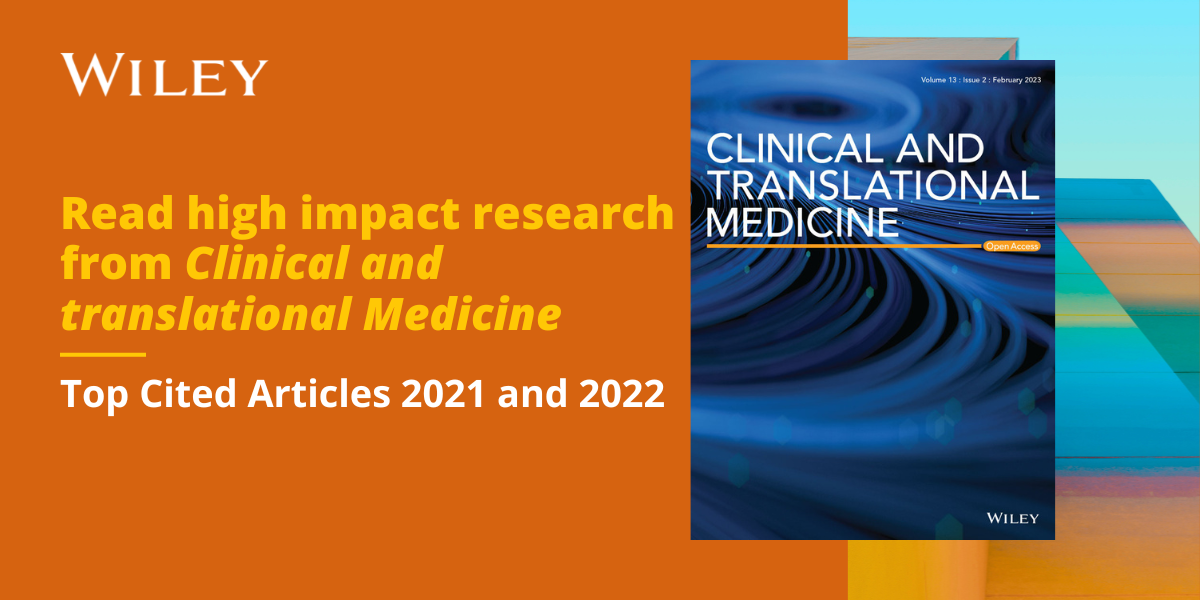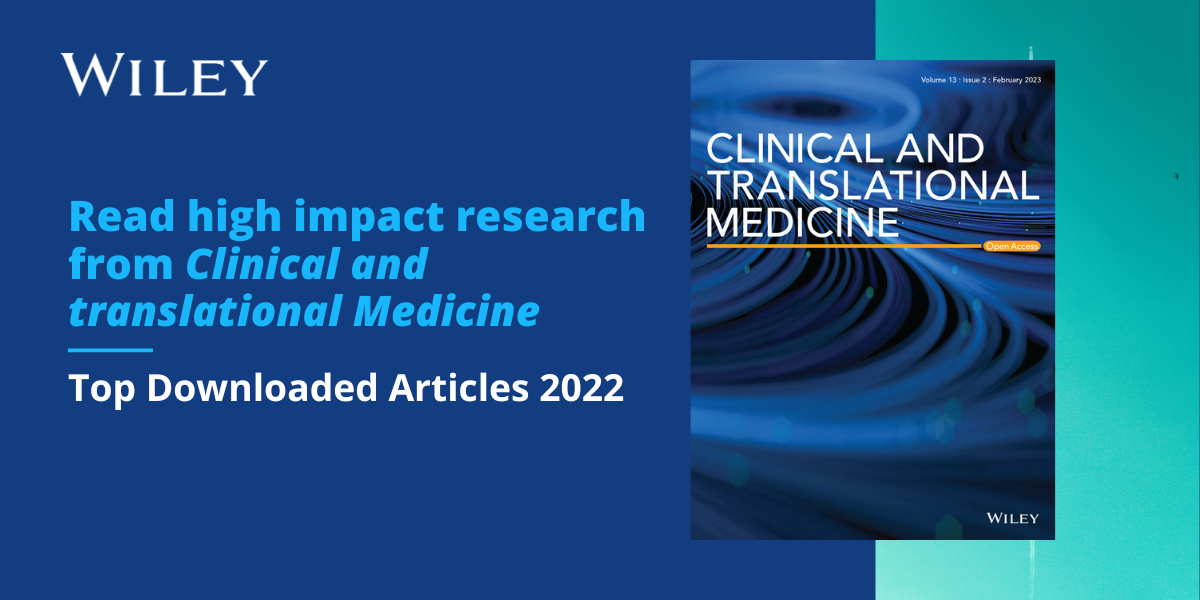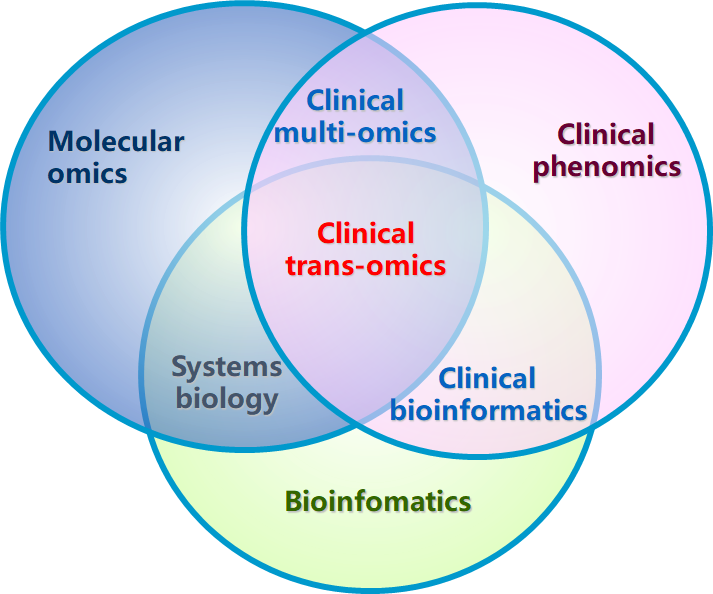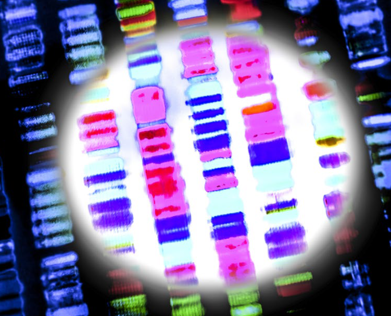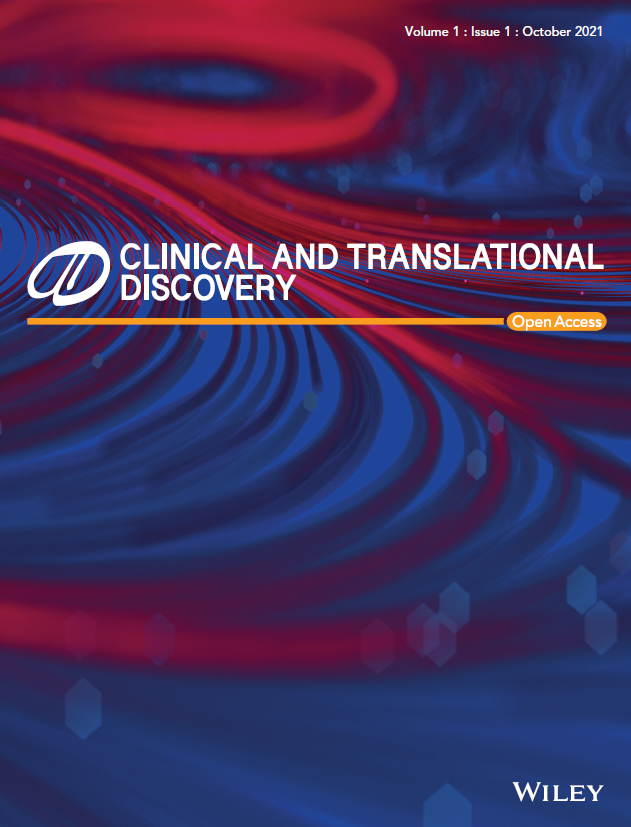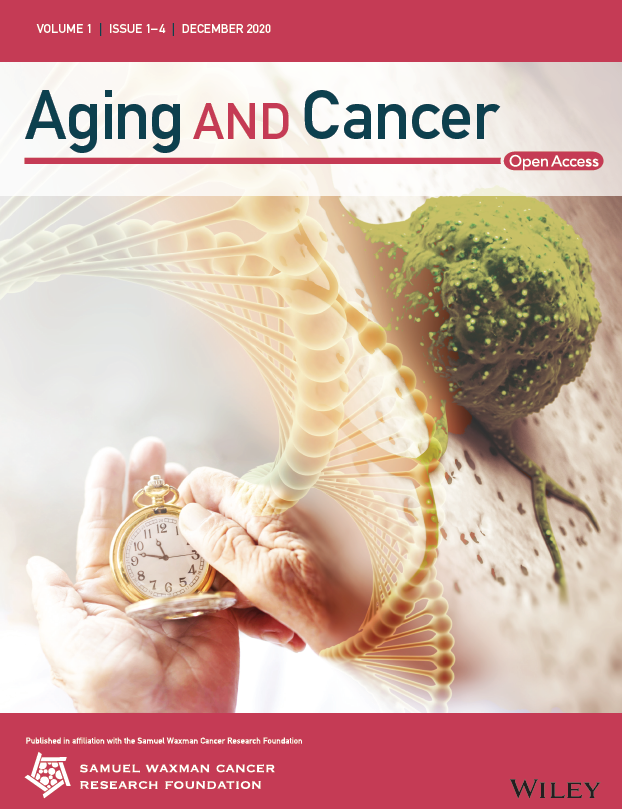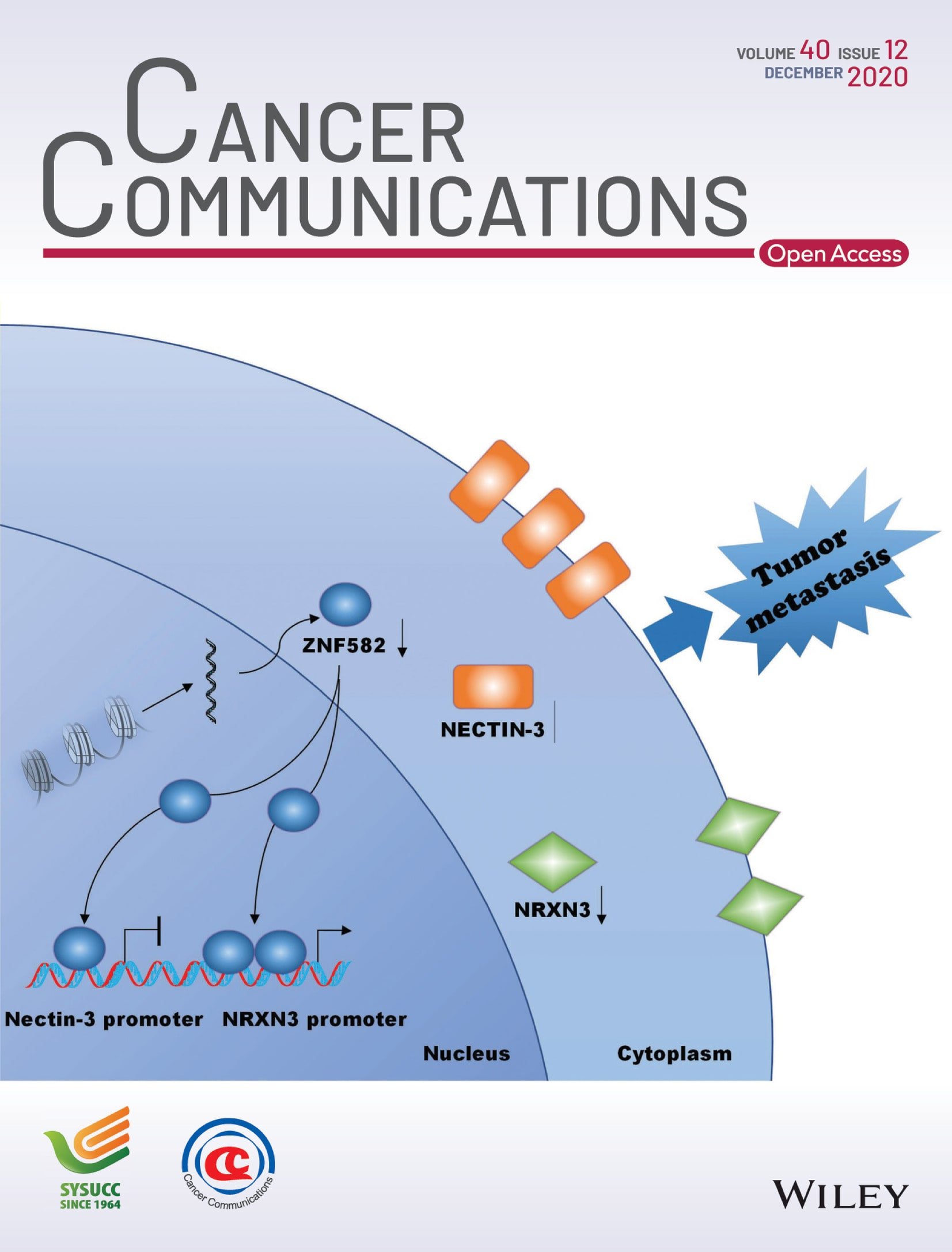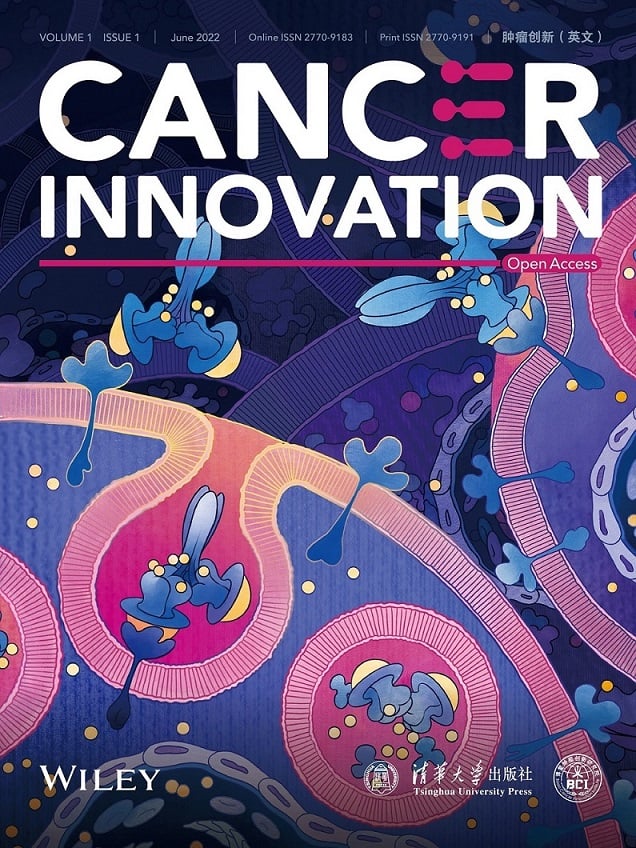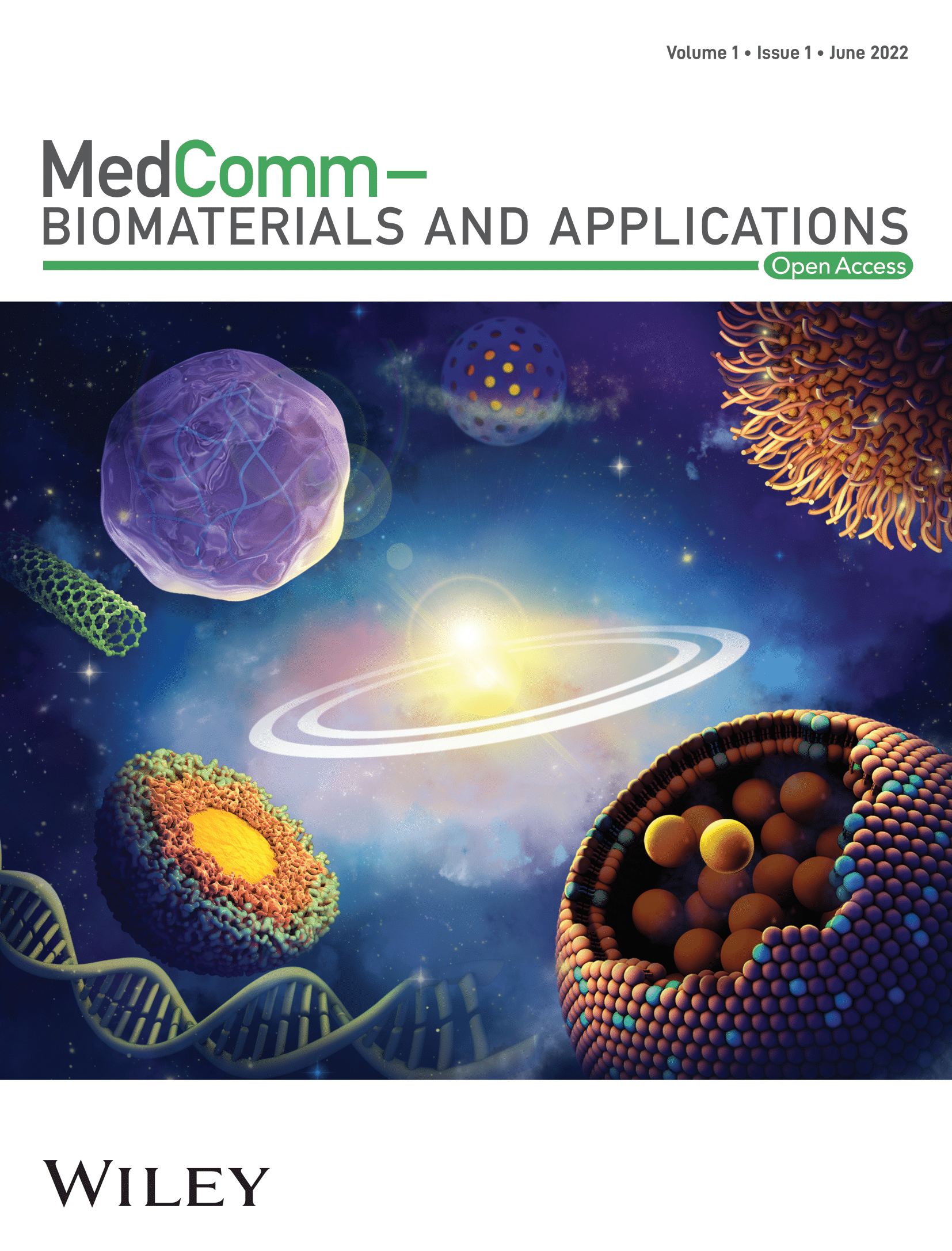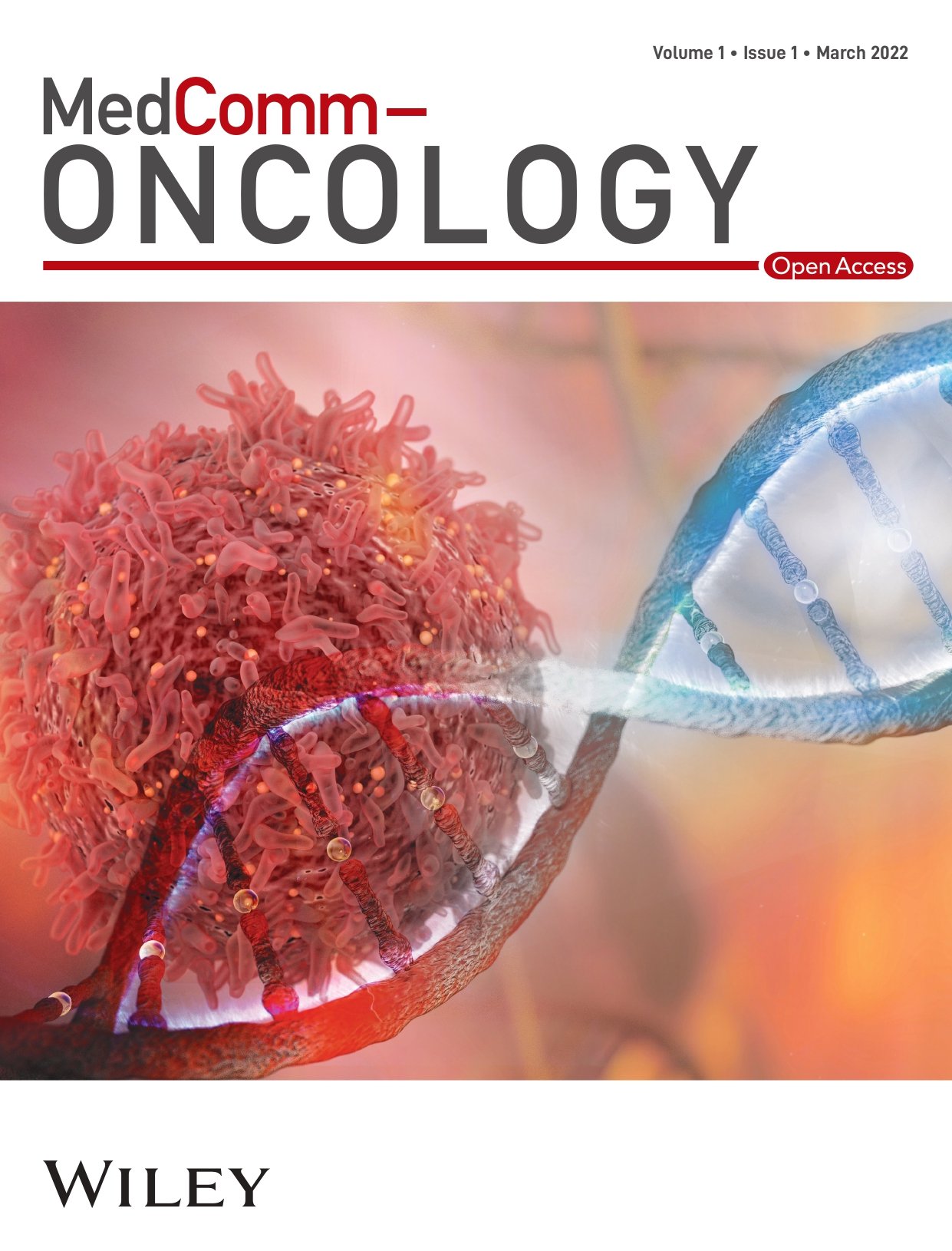Journal list menu
Export Citations
Download PDFs
ISSUE INFORMATION
EDITORIAL
There is no health without mental health: Challenges ignored and lessons learned
- First Published: 31 May 2022
The brake matters: Hyperexcitable arousal circuits in sleep fragmentation with age
- First Published: 13 June 2022
COMMENTARY
GPR65, a novel regulator of helper T-cell polarization in inflammatory bowel disease
- First Published: 08 June 2022
Urinary cell-free extrachromosomal circular DNAs: A possible biomarker for chronic kidney disease
- First Published: 09 June 2022
HACE1 builds molecular crosstalks between rare diseases and (more) common disorders
- First Published: 09 June 2022
Renaming the SARS-CoV-2 Omicron sublineages as SARS-CoV-3 is contrary to nomenclature standards based on evolutionary and serological evidence
- First Published: 13 June 2022
Suicide among patients with cancer: a call to action for researchers and clinical caregivers
- First Published: 29 June 2022
RESEARCH ARTICLES
TGF-β1 mediates pathologic changes of secondary lymphedema by promoting fibrosis and inflammation
- First Published: 02 June 2022

- TGF-β1 expression, fibroblast proliferation and ECM deposition are increased in lymphedematous skin.
- Tissue lysate of lymphedematous skin induces fibroblast proliferation, ECM production and increases the stiffness of fibroblasts, LECs and LSMCs.
- Inhibition of TGF-β1 decreases ECM deposition, immune cell infiltration and increases collateral lymphatics formation.
- Topical treatment of pirfenidone is highly effective for lymphedema treatment.
Uterus globulin associated protein 1 (UGRP1) binds podoplanin (PDPN) to promote a novel inflammation pathway during Streptococcus pneumoniae infection
- First Published: 02 June 2022

1. UGRP1–PDPN signalling activate RhoA to enhance the interaction of IKKγ and IKKβ.
2. Interaction of IKKγ and IKKβ activate NF-κB to enhance expression of TLR2, MyD88 and NOD2.
3. Upon S. pneumoniae infection, increased expression of TLR2, MyD88 and NOD2 could generate enhanced NF-κB signalling to produce more pro-inflammatory cytokines including IL-6, IL-1β and TNFα.
EASY-APP: An artificial intelligence model and application for early and easy prediction of severity in acute pancreatitis
- First Published: 02 June 2022
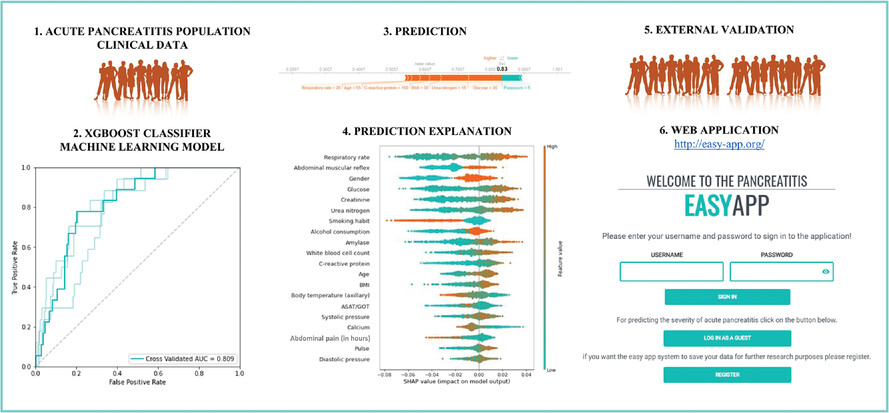
- The EASY prediction score is a practical tool for identifying patients at a greater risk for severe acute pancreatitis shortly after hospital admission.
- The explanation of the impact of features on the prediction helps physicians understand the decision of the machine learning model.
- The easy-to-use web application is available for clinicians and contributes to the improvement of the model.
DNA methylation patterns reflect individual's lifestyle independent of obesity
- First Published: 12 June 2022
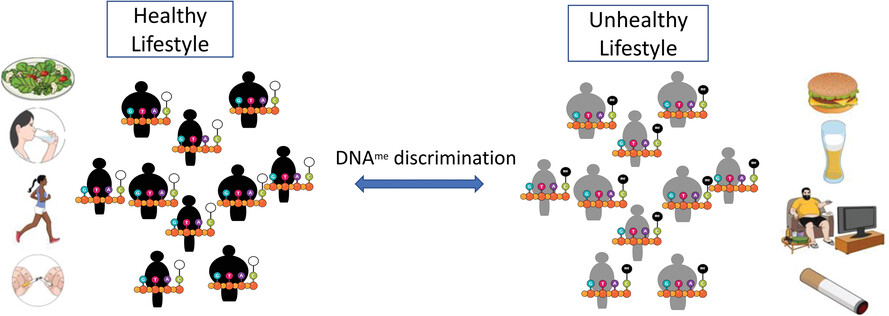
- Long-term lifestyle habits including diet, physical activity, smoking and alcohol consumption jointly shape epigenetic patterns and affect methylation age.
- These effects clearly dominate over those driven by age and obesity alone.
- An interplay of lifestyle aspects needs to be considered when analysing epigenetic data with regard to complex metabolic diseases.
Genome-wide CRISPR/Cas9 screening for therapeutic targets in NSCLC carrying wild-type TP53 and receptor tyrosine kinase genes
- First Published: 12 June 2022
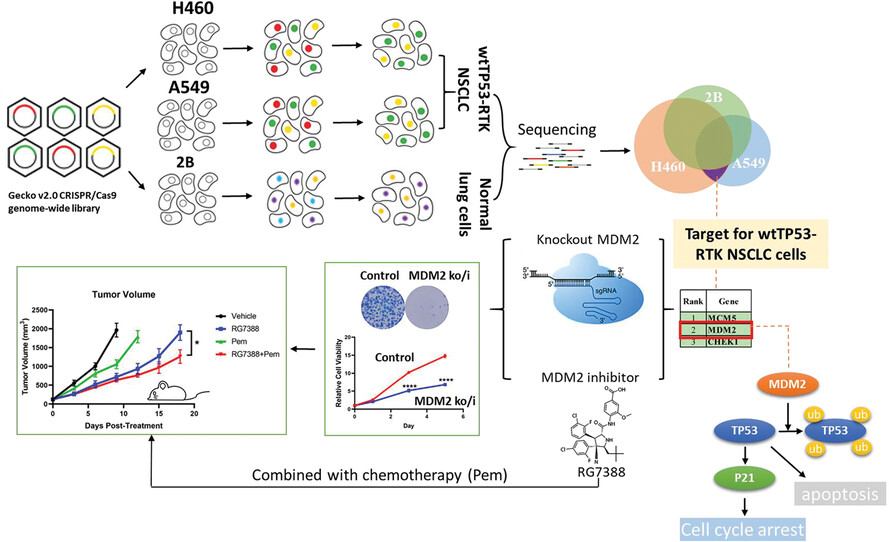
- Genome-wide CRISPRCas9 screening identified MDM2 as a potential target for wtT53-RTK NSCLC cells.
- MDM2 inhibitor RG7388 selectively kill wtT53-RTK cells but is less effective against NSCLC cells carrying other genotypes.
- RG7388 and pemetrexed worked synergistically in blocking proliferation and tumor growth of wtT53-RTK NSCLC.
Nicotinamide-N-methyltransferase is a promising metabolic drug target for primary and metastatic clear cell renal cell carcinoma
- First Published: 08 June 2022
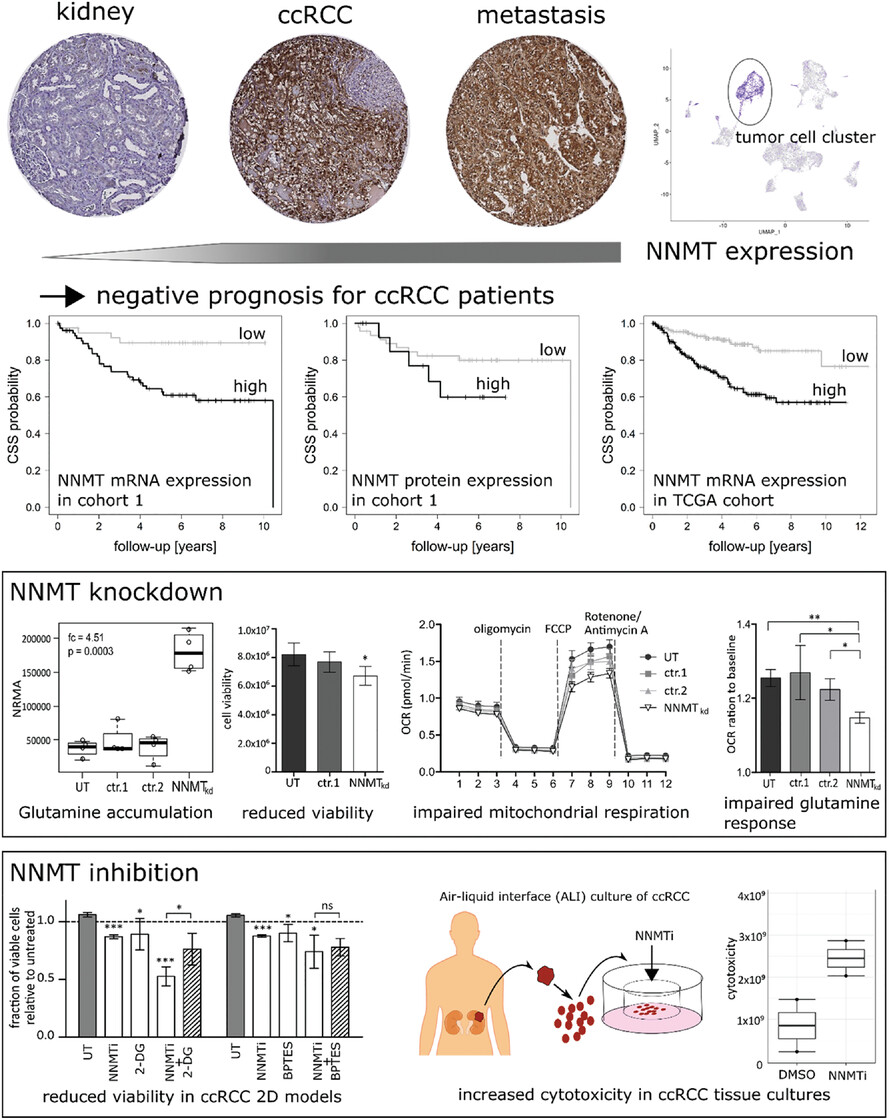
- NNMT is highly expressed in ccRCC primary tumours and metastases, correlating with worse patient survival.
- Glutamine metabolism is impaired in NNMT-depleted cells, with negative consequences for cellular fitness.
- NNMT inhibition reduces cell viability and induces cytotoxicity in 2D/3D ccRCC-derived tumour models.
- Beyond NNMT inhibition for the treatment of metabolic diseases, its application for anticancer therapy appears promising.
TLR4 aggravates microglial pyroptosis by promoting DDX3X-mediated NLRP3 inflammasome activation via JAK2/STAT1 pathway after spinal cord injury
- First Published: 12 June 2022
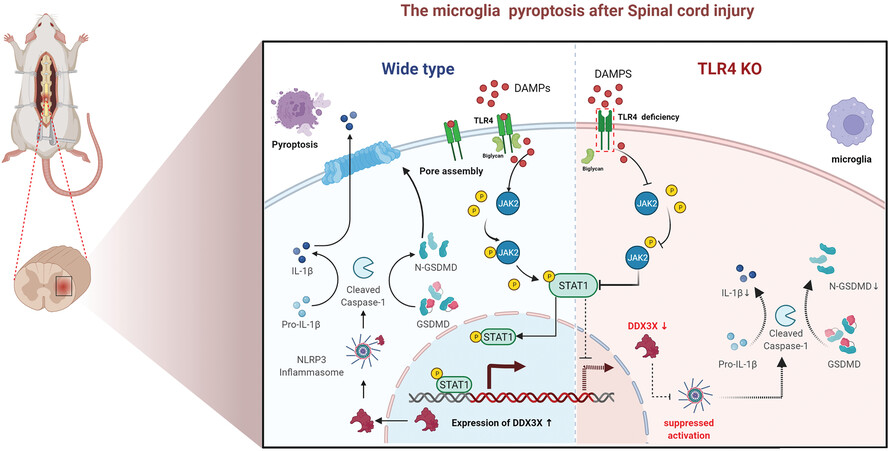
-
TLR4 and DDX3X are upregulated after SCI in mice.
-
TLR4 deficiency alleviated DDX3X-dependent NLRP3 inflammasome activation and microglial pyroptosis after SCI in mice.
-
TLR4 interacts with BGN and jointly promotes STAT1-dependent transcriptional activation of DDX3X by activating the JAK2/STAT1 pathway after SCI in mice.
Combined treatment with anti-PSMA CAR NK-92 cell and anti-PD-L1 monoclonal antibody enhances the antitumour efficacy against castration-resistant prostate cancer
- First Published: 13 June 2022
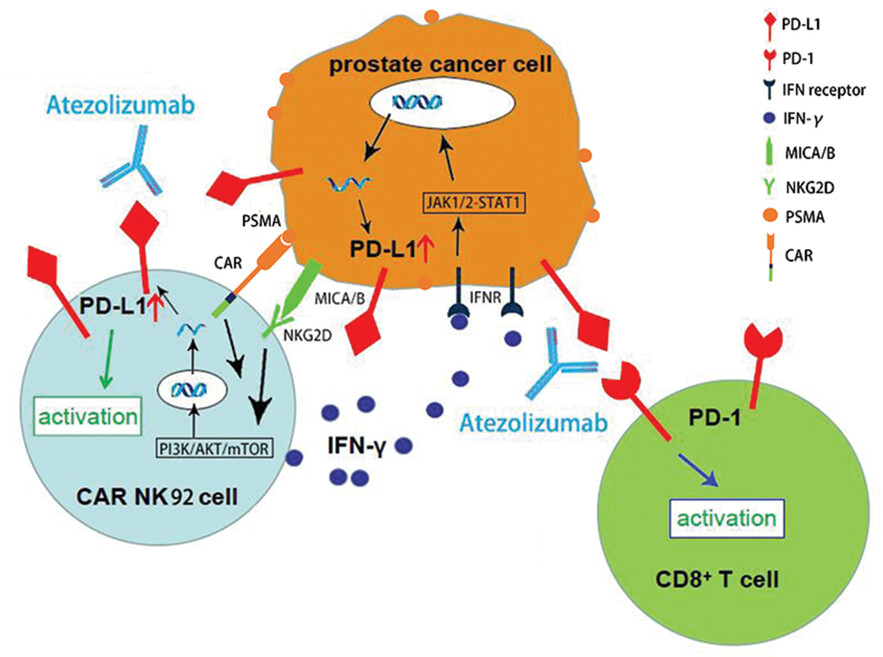
- CAR NK-92 is activated through specific recognition of PSMA on prostate cancer cells.
- Expression of PD-L1 on activated CAR NK-92 is upregulated via CAR-triggered PI3K/AKT/mTOR pathway.
- Expression of PD-L1 on cancer cells is upregulated via IFN-γ-mediated JAK-STAT pathway.
- Atezolizumab potentiates CAR NK-92 cytotoxicity by directly acting on PD-L1 on CAR NK-92 and unleashes CD8+ T cell via blocking PD-L1/PD-1 axis.
Regulatory roles of external cholesterol in human airway epithelial mitochondrial function through STARD3 signalling
- First Published: 09 June 2022
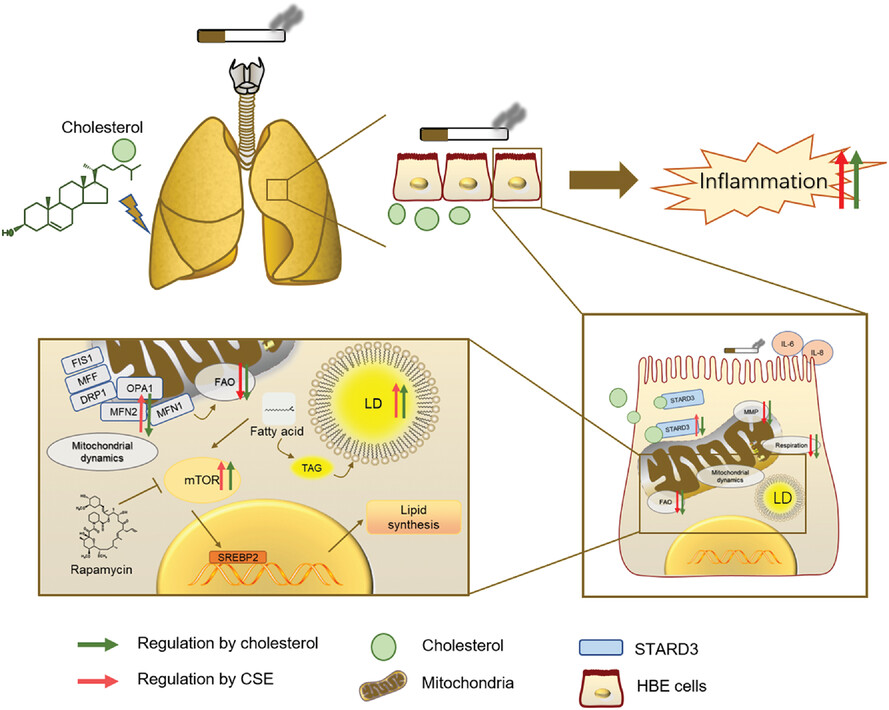
- STARD3, upregulated in COPD, could help cholesterol transfer to mitochondria and lead to mitochondrial dysfunction.
- Exogenous cholesterol reversed the protective MFN2 upregulation in CSE stimulation and exacerbated the mitochondrial dysfunction.
- Mitochondrial dysfunction caused by MFN2 downregulation altered the lipid homeostasis related to the activation of mTOR.
Single-cell RNA sequencing reveals the characteristics of cerebrospinal fluid tumour environment in breast cancer and lung cancer leptomeningeal metastases
- First Published: 09 June 2022
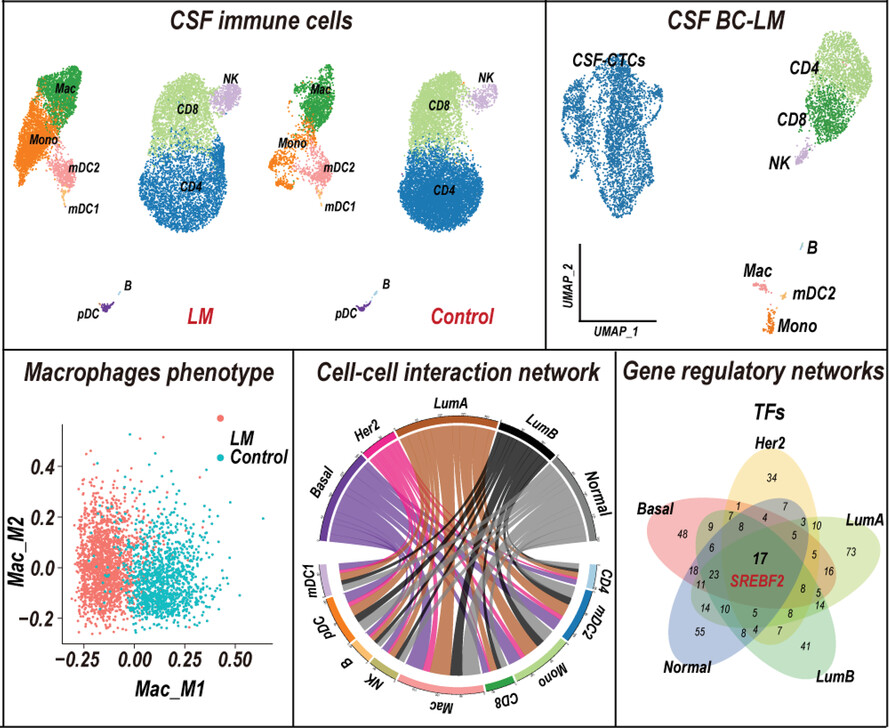
- Integrated analysis of characteristics of CSF tumour environment of LM patients.
- Five subtype-specific CSF-CTCs of breast cancer showed great heterogeneities on cell proliferation and cancer-testis antigens expression.
- Gene regulatory networks (GRNs) highlighted transcription factor SREBF2 activated in the breast cancer CSF-CTCs
ZNF677 suppresses renal cell carcinoma progression through N6-methyladenosine and transcriptional repression of CDKN3
- First Published: 09 June 2022
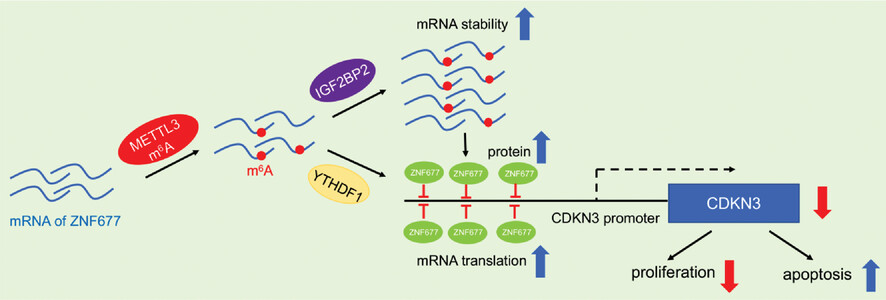
-
ZNF677 is frequently silenced via m6A modification in RCC.
-
The m6A modified CDS of ZNF677 positively regulates its translation and stability via binding with YTHDF1 and IGF2BP2, respectively.
-
ZNF677 exerted its tumor suppressor functions in RCC cells through transcriptional repression of CDKN3 via binding to its promoter.
YTHDF2 promotes intrahepatic cholangiocarcinoma progression and desensitises cisplatin treatment by increasing CDKN1B mRNA degradation
- First Published: 13 June 2022

- YTHDF2 is upregulated in ICC tissues, particularly in chemoresistant ICC tissues, and correlated with poor prognosis.
- Overexpression of YTDHF2 promotes ICC cell proliferation, inhibits apoptosis and accelerates cell cycle.
- Overexpression of YTHDF2 desensitised ICC cells to cisplatin treatment
- YTHDF2 facilitates ICC progression and desensitised cisplatin treatment by downregulating CDKN1B expression in an m6a dependent manner.
A multi-omics analysis for the prediction of neurocognitive disorders risk among the elderly in Macao
- First Published: 13 June 2022
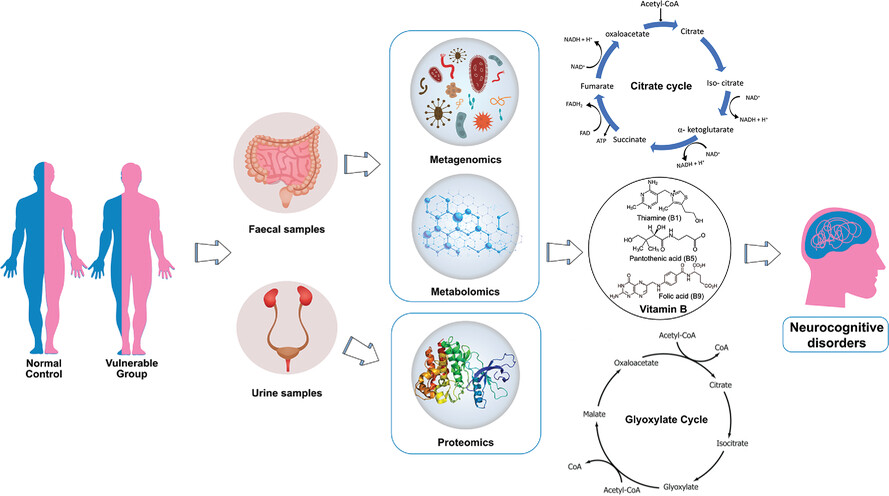
- Multi-omics characteristics of Macao elderly susceptible to neurocognitive disorders (NCDs) were investigated.
- Gut microbiota, faecal metabolites and urine exosomes were detected utilizing metagenomics, metabolomic and proteomic.
- Disturbed glyoxylate and dicarboxylate metabolism (bacteria), vitamin digestion and absorption and tricarboxylic acid cycle can serve as predictors of NCDs risk.
Three-dimensional genome structure shapes the recombination landscape of chromatin features during female germline stem cell development
- First Published: 22 June 2022
Preclinical platforms to study therapeutic efficacy of human γδ T cells
- First Published: 22 June 2022
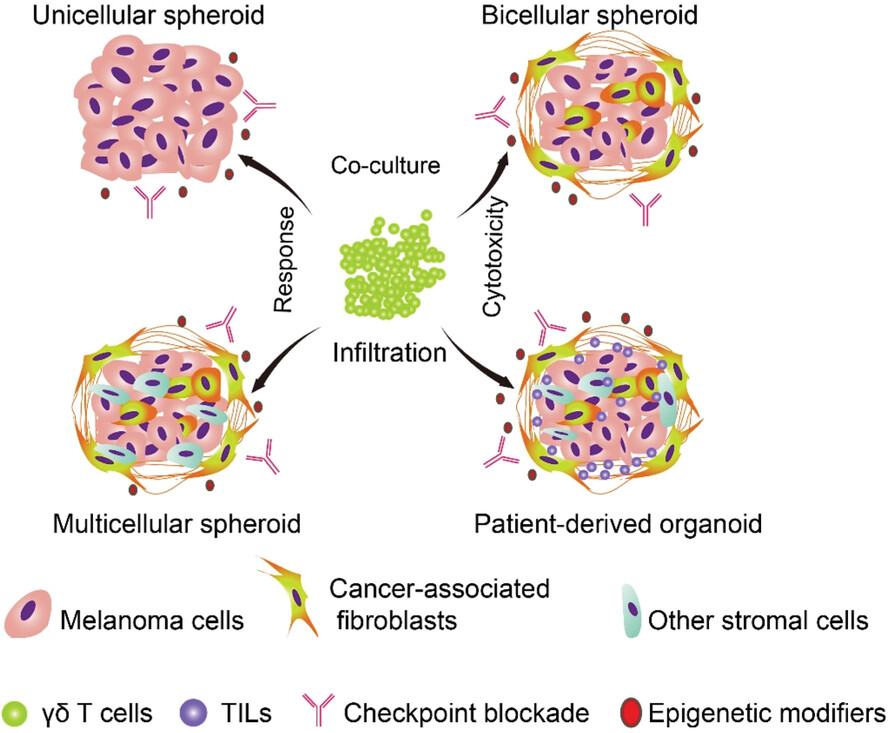
The immunosuppressive TME of these 3D models contained of tumour cells, CAFs and immune cells accompanied by high expression of PD-L1, PD-L2 and reduced expression of MICA/B. The immune checkpoint inhibitors and epigenetic modifiers enhance the efficacy of γδ T cells against 3D models. These four 3D models provided valuable preclinical platforms to test γδ T cell functions for immunotherapy.
Integrated microbiome, metabolome, and proteome analysis identifies a novel interplay among commensal bacteria, metabolites and candidate targets in non-small cell lung cancer
- First Published: 23 June 2022
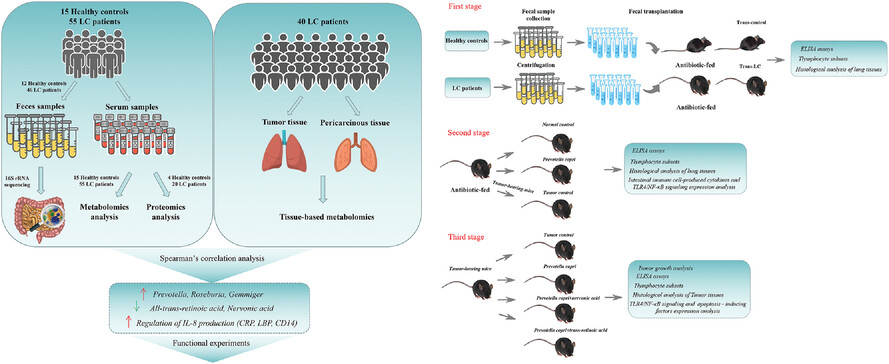
- Prevotella, Gemmiger, and Roseburia were significantly upregulated at the genus level in NSCLC patients.
- Nervonic acid/all-trans-retinoic acid was negatively related to Prevotella.
- CRP, LBP, and CD14 were identified as potential biomarkers for NSCLC.
- Transplantation of faecal microbiota from patients with NSCLC or Prevotella copri-colonized recipient mice caused inflammation and immune dysregulation in Lewis lung cancer (LLC) cells-bearing C57BL/6 mice.
- Nervonic acid/all-trans-retinoic acid improved the Prevotella copri-treated LLC cells-bearing C57BL/6 mice phenotype.
Lipid metabolism–related lncRNA SLC25A21-AS1 promotes the progression of oesophageal squamous cell carcinoma by regulating the NPM1/c-Myc axis and SLC25A21 expression
- First Published: 23 June 2022
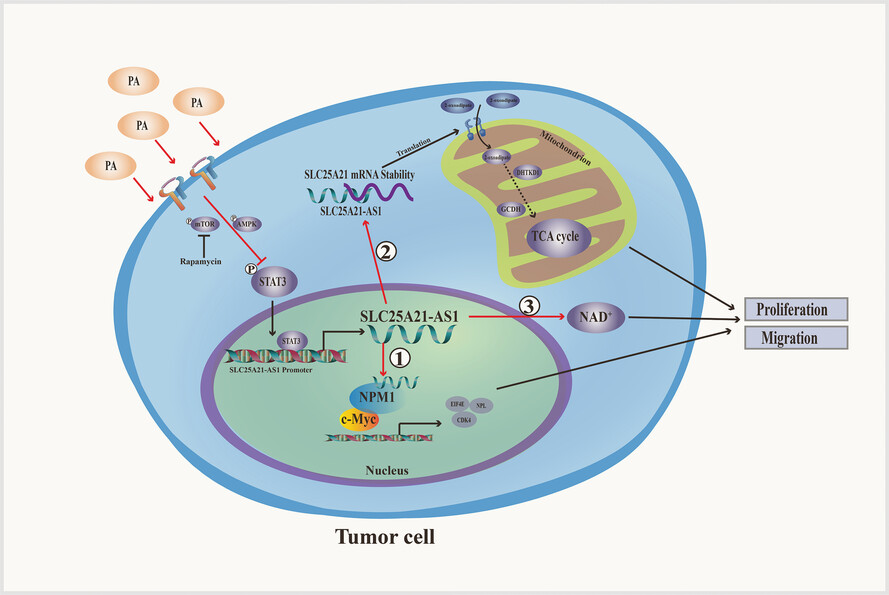
- Identified a lipid metabolism related lncRNA SLC25A21-AS1 which can be downregulated by HFD/PA.
- LncRNA SLC25A21-AS1 promotes proliferation and migration of ESCC cells through the NPM1/c-Myc axis and elevation of SLC25A21 expression.
- LncRNA SLC25A21-AS1 is associated with overall survival and tumor grade.
LncRNA LOC105378097 inhibits cardiac mitophagy in natural ageing mice
- First Published: 27 June 2022
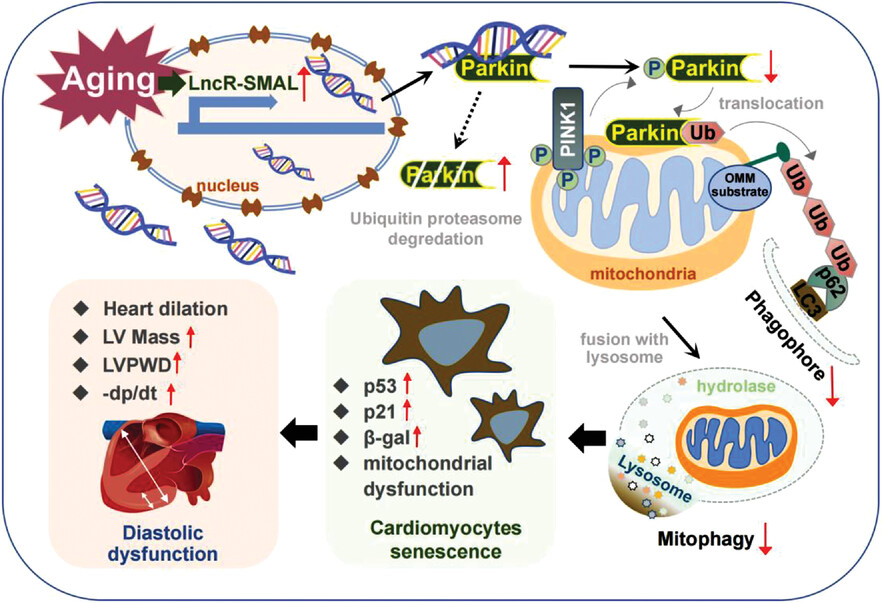
(1) The heart-enriched lncR-SMAL is robustly increased in its level in serum samples of human subjects over 60-year old relative to young controls, and in both nucleus and cytoplasm of senescent cardiomyocytes. (2) Artificial overexpression of lncR-SMAL induces cardiac senescence by inhibiting Parkin-mediated mitophagy. Knockdown of endogenous lncR-SMAL in cardiomyocytes partially abrogated cell senescence. (3) LncR-SMAL interacts with Parkin protein and promotes ubiquitin-proteasome degradation of Parkin in senescent cardiomyocytes.
Phosphoproteome reveals molecular mechanisms of aberrant rhythm in neurotransmitter-mediated islet hormone secretion in diabetic mice
- First Published: 27 June 2022
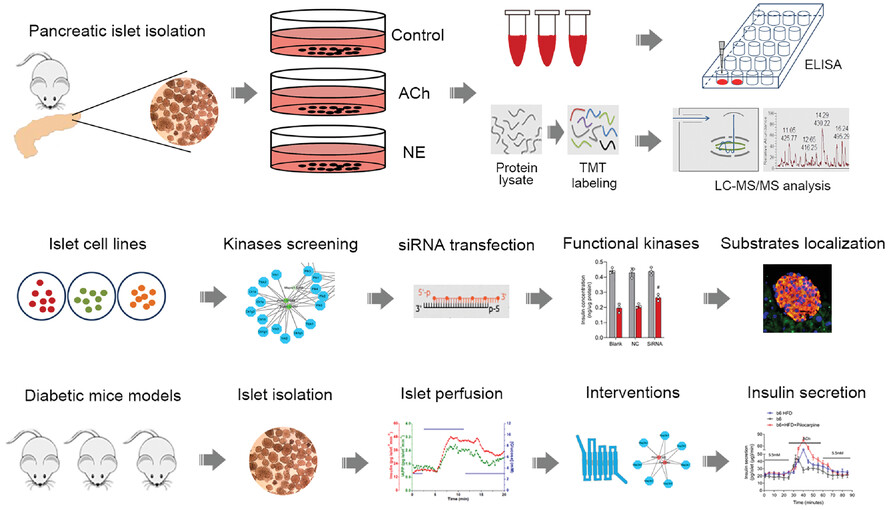
- Rapid regulation of neurotransmitters in islet is exerted by altering proteins phosphorylation rather than expression levels.
- Proteins phosphorylation modulated by kinases play an important role in neurotransmitters ACh and NE mediated islet hormones secretion.
- Impaired innervation and aberrant rhythm of insulin secretion were found in islet of diabetic mice, which could be ameliorated after intervention with key receptors and kinases.
Direct targeted therapy for MLL-fusion-driven high-risk acute leukaemias
- First Published: 22 June 2022
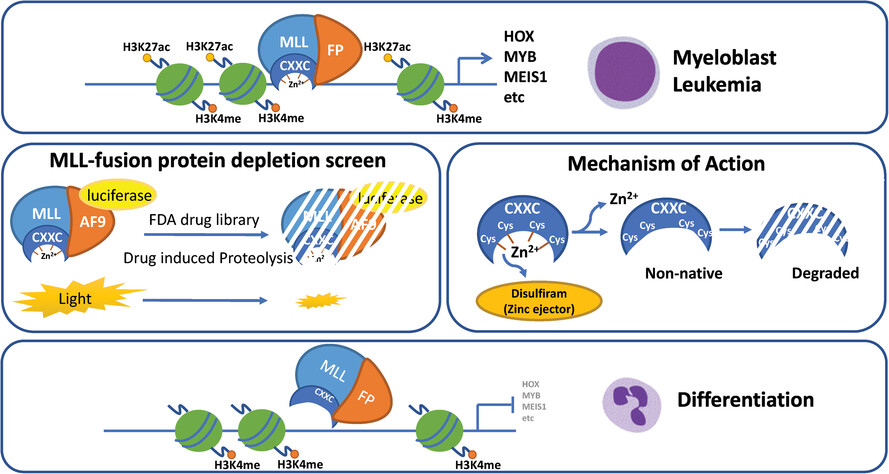
Direct inhibition of MLL-fusion proteins is a potential therapeutic strategy.
MLL-fusion depletion screen identified disulfiram for its ability to ablate MLL-fusion protein and block-associated leukaemic phenotype.
Disulfiram directly targets the CXXC domain that is essential for all MLL-fusion proteins.
Disulfiram prevents the binding to the target genes of the MLL-fusion resulting in rapid decrease in H3K27ac levels.
LETTER TO EDITOR
Diabetes alters the protein secretome of human adipose-derived stem cells and promotes tumorigenesis in hepatic cancer cells
- First Published: 02 June 2022
Dysregulation of the CD147 complex confers defective placental development: A pathogenesis of early-onset preeclampsia
- First Published: 02 June 2022
Defective α-tectorin may involve tectorial membrane in familial Meniere disease
- First Published: 02 June 2022
A pilot study of assessing whole genome sequencing in newborn screening in unselected children in China
- First Published: 05 June 2022
Space flight associated changes in astronauts’ plasma-derived small extracellular vesicle microRNA: Biomarker identification
- First Published: 02 June 2022
Stratifin (SFN) regulates lung cancer progression via nucleating the Vps34-BECN1-TRAF6 complex for autophagy induction
- First Published: 08 June 2022
EpCAM deficiency causes premature aging of intestinal epithelium via hyperactivating mTORC1 pathway
- First Published: 09 June 2022
Angiomotin mutation causes glomerulopathy and renal cysts by upregulating hepatocyte nuclear factor transcriptional activity
- First Published: 13 June 2022
CaMKII, that binds with ligustilide, as a potential drug target of Suxiao jiuxin pill, a traditional Chinese medicine to dilate thoracic aorta
- First Published: 09 June 2022
Immunological evaluation of an mRNA vaccine booster in individuals fully immunized with an inactivated SARS-CoV-2 vaccine
- First Published: 09 June 2022
Human-host transcriptomic analysis reveals unique early innate immune responses in different sub-phenotypes of COVID-19
- First Published: 13 June 2022
Altered microRNA expression in severe COVID-19: Potential prognostic and pathophysiological role
- First Published: 13 June 2022
Prognosis-related gene signature is enriched in cancer-associated fibroblasts in the stem-like subtype of gastric cancer
- First Published: 26 June 2022
Integrating proteomic and clinical data to discriminate major psychiatric disorders: Applications for major depressive disorder, bipolar disorder, and schizophrenia
- First Published: 27 June 2022
FTO-mediated m6A modification of SOCS1 mRNA promotes the progression of diabetic kidney disease
- First Published: 22 June 2022
Induced neural stem/progenitor cell-derived extracellular vesicles promote recovery post-stroke
- First Published: 22 June 2022





